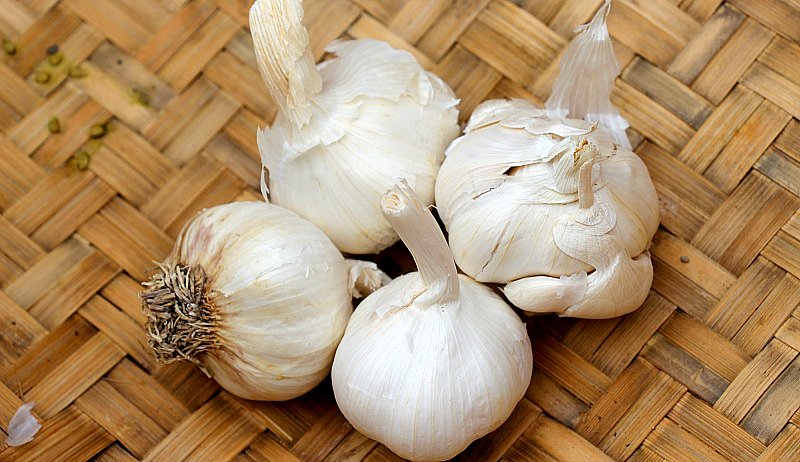
It’s hard to believe that in a few short weeks it will be time to harvest garlic in most parts of the country. By mid-July, the foliage of your garlic plants will begin to yellow and topple over. That’s a sign that it’s almost time to dig up the bulbs and dry them for later use. Though there are many ways to handle garlic at harvest time, here’s my favorite way of harvesting and drying homegrown garlic.
Garlic is ready for harvest when about 50 percent of the foliage has turned yellow. (Here are tips on planting it.) If you wait too long before harvesting and drying homegrown garlic, the heads will split open and could even begin to sprout. Harvesting too late means you’ll reduce the storage life of the cloves, but if you harvest too early, the cloves might not be fully formed, and the skin surrounding them might not be in prime shape. This can also lead to a reduced storage life.
To harvest garlic, use a border fork to gently pry up each head, being careful to lift the head from the bottom and not pull it from the top. As you tilt the border fork back to lift the garlic, give a gentle tug to the garlic greens and pull the head out of the soil. Keep the greens attached to the head.
Collect the harvested garlic in a box or basket, laying the greens in the same direction.
Harvest garlic on a dry day and try not to damage the paper covering over each head. If you accidentally pierce a head of garlic with the border fork, use it within a few days.
How to Cure Homegrown Garlic
To store your garlic harvest for long-term use, it first needs to be cured. Curing serves to toughen the skin and improve the shelf life of the cloves. Cure garlic in a dry, airy place, out of direct sunlight. I cure my garlic in the garage, but a covered porch as well as a barn or shed will do. Immediately after harvesting, lay the bulbs out in a single layer, giving each bulb plenty of room to breathe. Don’t worry about cleaning off any dirt or washing the bulbs, and leave the greens intact. You can lay the bulbs on a table, a piece of plywood or any other flat surface.
You can also gather the garlic into groups of five to seven heads, tie them together and hang them from a rafter for the curing process.
Over the course of the next several weeks, the greens will turn brown, transporting their nutrients and moisture into the bulb as they do. Once the leaves are brown and crispy, trim off any root hairs and cut the leaves off, leaving only a small stub at the top of the bulb.
At that point, you can also peel off the outermost layer of papery skin over each bulb, removing any excess dirt as you do. Do not, however, remove any more of the papery skin.
How to Store Homegrown Garlic
Once your garlic has been fully cured and trimmed, store the heads in brown paper bags, mesh bags or cardboard boxes. The trick is to keep the heads dry, cool and dark.
If possible, put the bags or boxes full of garlic in an area that’s around 55 or 60 degrees Fahrenheit with a humidity level of about 60 percent. Do not refrigerate the heads, and do not let them get too warm or the cloves will sprout or shrivel up.
Harvesting and drying homegrown garlic is a simple process, but it’s one that makes a big difference in the storage life of the cloves. With proper care, you’ll enjoy your garlic for many months to come.




